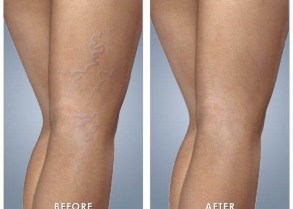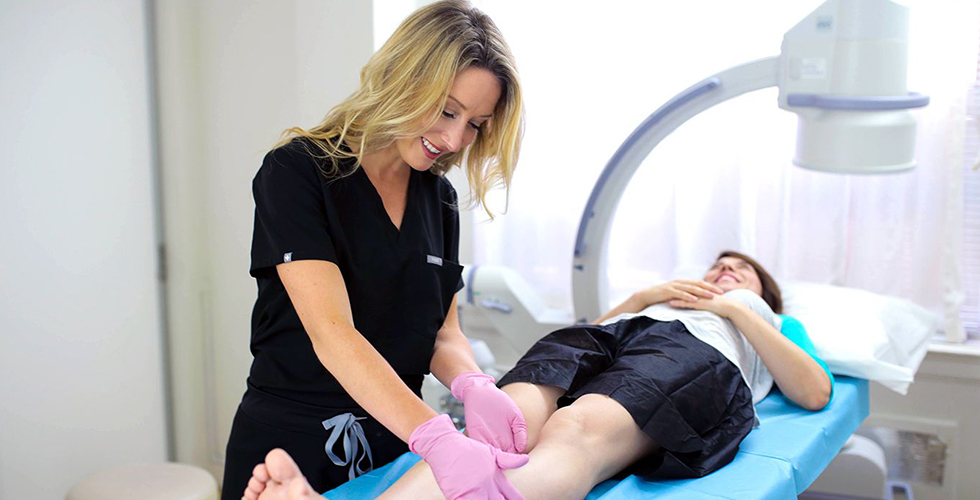In sclerotherapy, a special chemical (sclerosing) is injected into a varicose vein to damages as well as recover the interior cellular lining of the blood vessel. This creates the blood vessel to shut.
Throughout this procedure, the affected leg rises to drain pipes the blood, as well as the sclerosant is infused into the varix. The procedure is performed in a doctor's workplace or clinic as well as lasts in between 5 and half an hour, depending upon how many varicose blood vessels are dealt with and exactly how large they are.

After the management of the sclerosing injection, stress is related to the veins to avoid the blood from returning when you stand. You might need to put on compression stockings for several days or weeks to preserve the pressure.
Is sclerotherapy painful? This is usual inquiry which individual asks to physician. The injection of sclerotherapy can be agonizing, and the chemical (sclerosing) that is injected can cause a burning or cramping experience for a couple of minutes in the area where the shot was applied. You might need a number of sessions and also many shots in each session, depending upon the level of the varices and also the type of sclerosing utilized.
What to expect after treatment
Sclerotherapy typically does not need any type of healing period and is sclerotherapy safe. Yes it is completely risk-free. You can possibly walk quickly after treatment. Stay clear of extreme exercise for 1 week after the procedure. Walk each day for at the very least 10 mins.
Avoid revealing your legs to the sunlight the initial 2 weeks after the treatment.
You most likely need to put on compression stockings for a short time after sclerotherapy.
You most likely need to put on compression stockings for a short time after sclerotherapy.
Why is it done?
Sclerotherapy is made use of to deal with:
The spider veins as well as tiny capillaries do not trigger extra serious issues.
Smaller varicose veins that come back after a varicose blood vessel elimination operation.
Sclerotherapy can be done alone or as a follow-up to surgical procedure.
Smaller varicose veins that come back after a varicose blood vessel elimination operation.
Sclerotherapy can be done alone or as a follow-up to surgical procedure.
Sclerotherapy should not be done if you:
Are expecting or breastfeeding.
Have a background of hatreds a sclerosant or similar materials.
You have embolism or swelling in the deep veins of your legs.
Have a background of hatreds a sclerosant or similar materials.
You have embolism or swelling in the deep veins of your legs.
Efficiency
Sclerotherapy costs less than surgical procedure, does not require a stay in the healthcare facility and permits a quick go back to function and also normal activities. Additionally if you have medical insurance then sclerotherapy cost covered by insurance.
Sclerotherapy can reduce symptoms as well as boost the appearance of the skin. It provides cause concerning 80 of every 100 people. It does not offer results in approximately 20 out of 100 people that go through the treatment.
Dangers
The threats of sclerotherapy consist of:
Changes in the colour of the skin along the treated capillary. This coloration can take in between 6 and twelve month to go away. In some individuals, it might be long-term.
Failure of the therapy to stop varicose capillaries from coming back.
Scars arising from abscess or cells death around the treated vein if sclerosing is infused out of a capillary or if there is a sclerosing leakage through the weakened blood vessel wall.
A mild or severe reaction to the sclerosing representative.
Blood clots or damages to the deep venous system.
Failure of the therapy to stop varicose capillaries from coming back.
Scars arising from abscess or cells death around the treated vein if sclerosing is infused out of a capillary or if there is a sclerosing leakage through the weakened blood vessel wall.
A mild or severe reaction to the sclerosing representative.
Blood clots or damages to the deep venous system.
To assume
If done for aesthetic factors, sclerotherapy is not generally covered by health insurance.
If you take into consideration sclerotherapy, you might want to ask yourself some questions about the treatment. These inquiries could include: Just how much experience does the doctor have with this particular treatment?

No comments:
Post a Comment